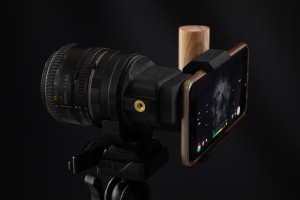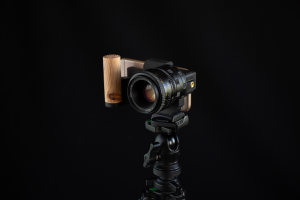Monday, September 10, 2018
Sunday, September 9, 2018
Saturday, September 8, 2018
35mm Color - Yodica Andromeda
Yodica Andromeda / 1 Roll / 35mm / 36exp / 400 iso/ Process C-41 / non-DX Coded
Andromeda – see the world through rose colored glasses! Yodica’s Andromeda film gives a pink complexion to everything you shoot.

The FPP is thrilled to offer “creative color films with special effects from Yodica Films, Italy! All reflecting the fun, far-out and totally groovy looks you can achieve by feeding this film into your favorite film camera!.
Friday, September 7, 2018
Mario Sorrenti’s Unseen Photographs of a Young Kate Moss
The photographer recalls documenting the seminal 1993 trip to the Virgin Islands he took with his then-girlfriend, who was on the cusp of stardom
TextHannah Tindle
When I ask Mario Sorrenti what his favourite image of Kate Moss might be, he finds it impossible to choose from the hundreds he has taken throughout the 25 years they have known one another. “It’s very hard to say,” the Naples-born fashion photographer writes, over an email exchange. “There are so many that I love.” Indeed, it was an all-consuming love that brought the young Moss and Sorrenti together, when they met in the early 1990s; Moss was 17 at the time and Sorrenti just a few years her senior. Both were on the cusp of stardom.
Their union was the kind that is unique to the artist and their muse, but without artifice or pretence. The candid nature of their relationship was extensively documented in 1993, during a trip that the pair took to the Virgin Islands. Sorrenti’s black and white film renders Moss in crisp chiaroscuro, either playing on a Game Boy in unbuttoned jeans or wrapping gauze round a cut on her foot, jokingly pouting at the camera in exaggerated pain. Some of these photographs would go on to become the inspiration for the iconic Calvin Klein Obsession campaign. But, there were many more intimate and unseen shots of that trip that are now the focus of a new book, published by Phaidon, simply titled Kate. “This is for you, Kate,” he writes in the edition’s forward. “I love you and thank you – Mario.” Here, he shares a few more of his memories.
Their union was the kind that is unique to the artist and their muse, but without artifice or pretence. The candid nature of their relationship was extensively documented in 1993, during a trip that the pair took to the Virgin Islands. Sorrenti’s black and white film renders Moss in crisp chiaroscuro, either playing on a Game Boy in unbuttoned jeans or wrapping gauze round a cut on her foot, jokingly pouting at the camera in exaggerated pain. Some of these photographs would go on to become the inspiration for the iconic Calvin Klein Obsession campaign. But, there were many more intimate and unseen shots of that trip that are now the focus of a new book, published by Phaidon, simply titled Kate. “This is for you, Kate,” he writes in the edition’s forward. “I love you and thank you – Mario.” Here, he shares a few more of his memories.

“I first met Kate in 1991 in London on a modelling job that we were both doing. I was immediately taken by her. She was so funny, sweet and beautiful. After the job I didn’t see her again for some time. I’m not really sure what she thought of me that day. You would have to ask her! I remember the first photograph I took of Kate. It was in the backyard of a flat where I was lodging. I hung a white sheet up with clothes pins and took her portrait. This picture is in the book.
”Kate and I went on vacation to Virgin Gorda in the British Virgin Islands. My mom found us a cool little place to go and take a break. It was very simple and on the beach. I think it had all of the right elements to create images; lots of textures and beautiful, puffy clouds. The light was perfect, and the water was so still and transparent. Time stood still. I took a lot of pictures on that trip, as I always do, and pasted them all into my diary. Fabien Baron and I were working together at Harper’s Bazaar during this time and I showed him the pictures. He thought they were the perfect inspiration for a Calvin Klein fragrance called Obsession, and asked if I would show the images to Calvin.
”Calvin loved them and asked me if I could recreate these images for him, and shoot a little film as well. Kate and I were sent back to the Caribbean where I found a dilapidated house on the beach. We took pictures and shot 16mm Bolex there for a week. I had one assistant that came with us to help me load the Bolex. It was an amazing place and a dream job. After that week in seclusion, we flew back to one of the larger islands where we had a huge black set built to finish the film.
”I think we both influenced each other quite a bit. She had incredible style and I had a lot of knowledge about art and photography. I like to think that we inspired each other. We are still close friends, and have worked together countless times over the past 25 years.”

A look back at Burt Reynolds and Sally Field’s relationship
Amy DuncanFriday 7 Sep 2018 1:02 pm

One of Burt Reynolds’ most famous relationships was with Sally Field, his Smokey And The Bandit co-star.
The couple dated for five years but ended when Burt ‘screwed’ the relationship up, he later admitted.
Despite being apart for almost 40 years, Sally Field was one of the first to pay tribute to Reynolds after the news of his death aged 82 broke on Thursday.
And she says Burt – who called Sally ‘the love of his life’ as recently as 2015 – never left her mind.
In a statement, Sally said: ‘There are times in your life that are so indelible, they never fade away.


Aged 82, the actor died of a
Burt and Sally co-starred in three films Smokey And The Bandit, Smokey And The Bandit II, The End and Hooper, the first being where they met in 1977.

He told the publication: ‘She first said no. And I called her and I said, “I know why you said no. You think it’s a silly movie with cars chasing each other and all that. But I don’t see it as that. I see it as a chance to work with the best young actress on the planet. If you want to, go ahead and say no”. And she went, “How the hell am I going to say no to that?”.’
Though they never married, Burt proposed to Sally – who had two children from her first marriage when they dated – on numerous occasions and longed to


‘The kids – Peter, 9, and Eli, 6 – and I have a great relationship, but we haven’t had enough time together. Am I supposed to tell Sally to drop them off and screech away? They’re more important to Sally than I am, which is the way it should be.’
He added: ‘I want a kid so bad that I ache, and yet I have this incredible fear. But one day you turn around and say, “Oh, hell, I’ll just do it.”‘
Like Sally, Burt had also previously been married, to Judy Carne between 1963 until 1965.


Sally was married to Steven Craig from 1968 to 1975 and then to Alan Greisman from 1984 to 1993.
However, Burt later admitted that Sally had always been ‘the love of his life’.
‘I miss her terribly,’ he told Vanity Fair in 2015.

And in a 2016 interview with Event magazine, Burt claimed the end of his relationship with Field is the biggest disappointment of his life when asked.
‘Sally Field. I did four movies with Sally and spent five years with her. She was the love of my life and I screwed the relationship up,’ he candidly revealed.
‘That sense of loss never goes away. I have no idea what Sally thinks about it. She could pick up the phone and speak to me but she never does.
‘I spoke to her son recently. He said that his mum talks about me all the time. Maybe she’ll phone me one day. I’d love to have that conversation.’
In March, Sally confirmed that they no longer spoke after their split in 1982 but credited the actor with being ‘the most important influence’ to come into her life during the Seventies.
One of the main factors for this was because Burt thought she was sexy, which had boosted Field’s confidence levels in the industry.
Sally had said in an interview: ‘I thought even if the film didn’t work, if he thinks I’m attractive in it, other people will think so, too.’
Burt himself has previously revealed how he pushed to get Field in Smokey, despite casting directors advising him against it as she lacked sex appeal.
He had told the Today show: ‘I wanted her really bad for Smokey. They said she’s not sexy. “You don’t get it it,” I said, “Talent is sexy. And she’s got that”.’
Morningside Shopping Centre to host ‘I Love Film’ Black and White Photography Exhibition.
The art of Film Photography will come to life asMorningside Shopping Centre hosts the Black and White
‘I Love Film’ Photography Exhibition from
6 to 14 September.
Shoppers are invited to delight in the work of over
40 photographers in a showcase of the understated elegance of black and white photography, shot entirely on film.
The photographs, on display throughout the centre
for the duration of the exhibition, will be hand processed and printed in a dark room by Dennis da Silva – one of few remaining hand photo printers currently in operation in South Africa. Dennis is a self-taught photographer and photo laboratory technician who started and managed one of the largest professional photo labs in Africa for over 45 years and has worked with many top local and international photographers and artists.Dennis holds an Honorary Fellowship from the Professional Photographers of South Africa (PPSA) and is on the management team of the South African Professional Photographers (SAPP), serving as the Facilitator of Accreditation and Judging.
Dennis has been a judicator in many prestigious photographic awards both locally and internationally, including the prestigious Sony Photographic Awards. Today he is known as a master black and white hand
printer and continues to print for noted photographers,
artists, collectors, galleries and museums around the world. In 2008 he was presented with the Sony Profoto Lifetime Achievement Award for his contribution to photography.
In a fast paced digital age, Alexi Portokallis says film photography offers a different perspective on the world. “It slows you down, it teaches you to stand still, appreciate the moment and take that perfect shot because you only have 36 shots in one film roll”, he says. Alexi is a photographer and content creator; and is passionate about Johannesburg’s city streets and its people. He began shooting with his iPhone 4 and his passion for photographs quickly developed with the rapid growth of lnstagram. This passion eventually led him to discovering the joys of film when he took part in a weekend workshop with Dennis da Silva and saw his images develop in front of his eyes in a darkroom. Alexi has worked with multiple brands from all over the world, from fashion to architecture and lifestyle, to
@alexioso. Alexi is also a proud ambassador of Leica
South Africa.
Adding even more magic to the occasion is that each of the unique,custom-printed photos will be available for purchase exclusively for Morningside Shopping centre
shoppers.
On Saturday 8 September; guests will be invited to attend the official exhibition opening in a celebration of the technique and artistry of pre-digital photography.
Morningside
Morningside Shopping Centre manager; Sharon Henry says the centre is looking forward to hosting a unique exhibition while profiling the work of the industry’s most talented photographers. “Black and white photography shot on film is especially captivating because it lends a timeless quality to the images and we’re delighted to be able to share this with our shoppers,” she says.
Free photography talks line-up:
11:30am I Dennis da Silva I Photography, film and darkroom
12:30pm I Miklas Manneke I The creative process that
goes into taking a photos and the similarities to video.
1:30pm I Alexi Portokallis llnstagram, apps and the basic principals of photography.
2:00pm I Lee-David de Haas and Brad Donald I film
photography and street photography.
Cameras and Accessories
by Sarah Saunders | Sep 5, 2018
Having grown up as part of what’s sometimes referred to as the ‘Oregon Trail generation’ – the oldest of the millennials – I took most of my pictures with an actual film camera, and not a smartphone. In my home office, I’ve got a short bookshelf that’s crammed full of photo albums and boxes stuffed to the brim with pictures that have not yet made it into an album. While I do love and appreciate my current iPhone and its excellent camera, I’ve always felt there was something magical about capturing a moment, having it developed or printed out, and then being able to hold that moment in your hand.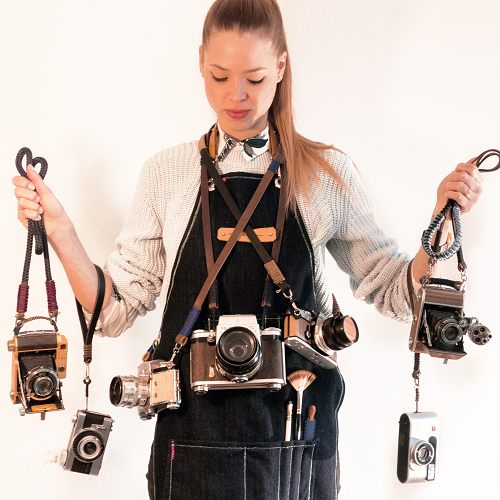
However, time does march on, and as is the case with many other older technologies, 3D printing is merging with photography to make all sorts of innovations possible, like 3D cameras, new tools, and 3D printed camera accessories. But that doesn’t mean that analog photography is dead.
Dora Goodman makes handcrafted, open source 3D printed cameras, along with camera straps and other open source camera projects, like a camera bag.
“Back in the days everything was created to last, and serve a lifetime. Tailors custom made garments that would serve for decades, while analog cameras were designed to even outlive their owners,” Goodman states on her website. “As opposed to this, nowadays in such anaccelerated world, it seems as if we are living in the time where products are replaced every year or so according to a currently trending direction. And yet while both our point of view and end result may constantly evolve, analog photography has remained a chain linking us to permanence through our unchanging connection to our camera.
“With the help of my products, I try to pass on my perspective, and the way I visualize the timelessness of analog photography.”
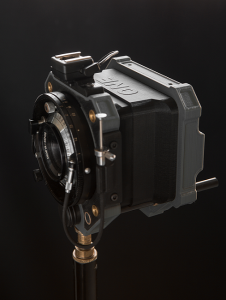 With Goodman Lab, a team of local design and photography enthusiasts, she is part of a movement dedicated to making high quality, 3D printable open source projects. Now, Goodman wants to share her concepts and ideas with makers around the world.
With Goodman Lab, a team of local design and photography enthusiasts, she is part of a movement dedicated to making high quality, 3D printable open source projects. Now, Goodman wants to share her concepts and ideas with makers around the world.“I have been working on creating an open source projects that I’d now love to share with as many photography enthusiasts and makers as possible,” Goodman told 3DPrint.com. “I provide the necessary files and plan / design for it, therefore it would basically be available for anyone with access to a 3D printer.”The first of these open source projects is the Goodman One camera, which Goodman has been working on for the past two years.
“The basic gist was a dream to dress up the classical medium / large format in a new modern look while still remain in the track of allowing some experiment, playfulness and mobility,” Goodman wrote.
“I wanted to make a modular camera that easily accepts leaf shutter lenses, and permits multiple photography techniques – be it wet plate collodion or digital back.”
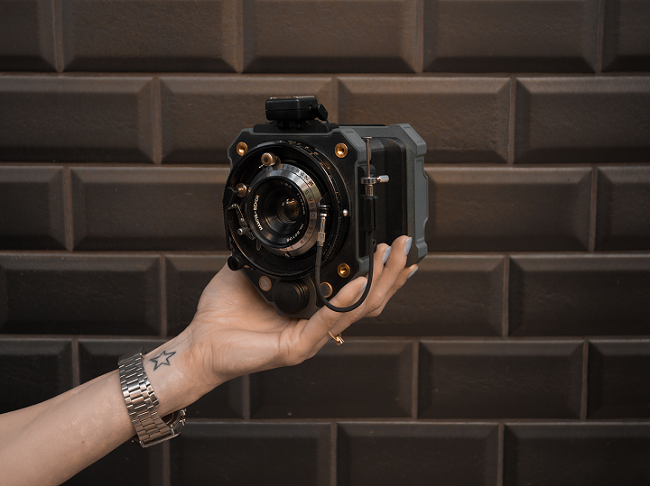
Goodman hopes to share the open source camera with anyone who has access to a 3D printer. While she is taking donations in order to “constantly improve the Goodman One,” Goodman will be making the 3D printing plans for the Goodman One and its accessories available free of charge in the future.
“I’ve uploaded the simple M3 version and slightly more complicated BRASS version of the camera. There is also a Roll film magazine and a Ground glass in the accessories folder,” Goodman wrote.
“Pretty soon I will share the optical viewfinder, leaf shutter lens adapter, cold flash mount, shutter cable holder, sheet film holder, sheet film cutter, sheet film holder for the developer tank, camera strap mount and the GOODMAN ONE IGUS version.”
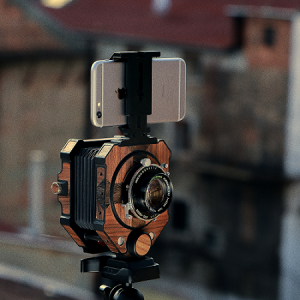 Using Goodman’s assembly instructions, makers can
Using Goodman’s assembly instructions, makers can “I have already designed a roll film and sheet film back, viewfinders, cold flash mount and a couple of other accessories to attach, but would like to challenge all of you makers out there to go ahead and develop the camera even further,” Goodman wrote. “The Goodman One could therefore be a device almost free yet rather light and durable allowing creative freedom for any experimental photographer.”Goodman says that she uploaded an “early challenge” to her site to help makers
Recently, Goodman also launched the Goodman AA (Art Adapter), her second open source camera project. The AA is a 3D printable DOF adapter that works with any smartphone and comes with a replaceable projection screen.
According to Goodman’s website, “It gives you great creative flexibility, plus it’s very easy to assemble.”
Thursday, September 6, 2018
The Leica CL: The Compact Film Camera That Killed the M5

Leica CL with 40mm Minolta M-Rokkor f/2 (Image Red Dot Cameras)
[Editor’s Note: This is an article co-writtenby William Fagan and Mike Evans and first published some months ago at Macfilos, an excellent photography website hosted by Mike Evans (That’s Mike to the right, with a red dot on his forehead). William is a member of The International Leica Society and an avid Leica collector. Mike is a former journalist and communications professional who started the Macfilos blog in 2008. Mike has written for Leicaphilia before. While Macfilos started as a blog about Apple and the then-new iPhone, it has since developed into a photography source, with lots of good Leica content among other things. A keen amateur photographer, Mike is “involved in the Leica world” and enjoys close relations with Leica UK. He’s also got a good sense of humor and is a nice guy who generously
by Mike Evans (That’s Mike to the right, with a red dot on his forehead). William is a member of The International Leica Society and an avid Leica collector. Mike is a former journalist and communications professional who started the Macfilos blog in 2008. Mike has written for Leicaphilia before. While Macfilos started as a blog about Apple and the then-new iPhone, it has since developed into a photography source, with lots of good Leica content among other things. A keen amateur photographer, Mike is “involved in the Leica world” and enjoys close relations with Leica UK. He’s also got a good sense of humor and is a nice guy who generously The recent introduction of a modern Leica CL has focused attention on the original CL from the 1970s. ‘CL’ stood for ‘compact Leica’, a compact rangefinder camera, which was manufactured in Japan by Minolta for Leica between 1973 and 1976. Minolta also sold a version of the camera called the Leitz Minolta CL and later Minolta developed a more advanced version called the Minolta CLE.
Whatever happened to the Leica CL? Many consider it was too good for its boots. It arrived at a time of great flux in Wetzlar, when the company was undergoing yet another identity crisis. The popular and successful M4 had been superseded by the advanced — very underrated but ultimately too ‘unconventional’ for mainstream success — Leica M5. The M5 model was produced in small numbers between 1971 and 1975. Despite its advanced features, including light metering, it wasn’t well received, not least because of its large size. In desperation, Leica brought the M4 back from the dead, shortly before the company’s Canadian phase when the unmetered Leica M4 re-appeared in two new guises, the M4-2 and the M4-P.
But in the background at this time was the Leica CL, a smaller camera which was designed in cooperation with Minolta and intended to be a more compact rangefinder alternative to the M5, but sharing some similar features such as metering. After its launch in 1973 it succeeded in that goal. Too well, unfortunately. Many adopted it because they wanted the light metering ability of the M5 but in a smaller package. The CL outsold the M5 (65,000 v 33900 according to the production numbers) and many believe that this is the reason Leica halted manufacture in 1976. It would be another eight years before light metering came to the M with the introduction of the M6.

Still wrapped and unopened after 40 years: Part of a trove of CLs bought recently by Red Dot Cameras (Image Mike Evans)
Admirers
Designed jointly by Leica and Minolta and manufactured by Minolta in Japan, the Leica CL is often considered a “mutant” camera, even sometimes being labelled as “not an actual Leica” by Leica purists. But the truth is that this unconventional pairing of manufacturers has been a primary reason for the camera developing a close group of admirers.The Leica CL is a 35 mm compact rangefinder camera with interchangeable lenses in the Leica M-mount. It first appeared in April 1973 and was released in the Japanese market in November 1973 as the Leitz Minolta CL. Both the Leica CL and Leitz Minolta CL were manufactured in a new Minolta factory in Osaka.
The Leica CL has a vertical-running focal-plane shutter, with cloth curtains, giving ½ to 1/1000 speeds. There is a through-the-lens CdS exposure meter mounted on a pivoting arm just in front of the shutter, similar to that on the Leica M5. The exposure is manual and is set using a needle system. The shutter is mechanical, but the shutter speed set is visible in the viewfinder just like the M5. The camera can still be used without any battery. There were two special C lenses produced for the camera, a 40mm f/2 and a 90mm f/4, both made in Germany. The finder’s framelines are for a 40mm, 50mm or 90mm lens. The 40mm and 50mm framelines appear when a 40mm or 50mm lens is mounted and the 40mm and 90mm framelines appear when the 90mm lens is mounted.

Leica CL with the 40mm Rokkor (Image Red Dot Cameras)
The original CL is a superbly compact and relatively cheap camera on which to use M-mount lenses, but it does not have a rangefinder as precise as that of any Leica M body. The rangefinder base of the CL is 31.5mm and the viewfinder magnification is 0.60, leading to a small effective rangefinder base of 18.9mm. This is probably too short for accurate focusing with lenses longer than 90mm and fast lenses used at full aperture. Some users report the camera is rather fragile, especially the rangefinder alignment and meter mechanism.Sixty-five thousand serial numbers were allotted to the Leica CL, and this number does not include the Leitz Minolta CL. 3,500 examples of the CL received a special “50 Jahre” marking in 1975, for Leica’s 50th anniversary.It is also said that 50 demonstration examples were made. They are completely operational, with the top plate cut away to show the internal mechanism.
Here is an example of the 50th anniversary model from William’s collection with the 40mm and 90mm lenses, a special leather purse to contain the camera plus 40mm lens and a thin haze filter which fits between the rubber lens hood and the front element on both lenses.

Leica CL 50th Anniversary model from William’s collection (Image William Fagan)
Leica M5
The Leica M5 is a 35 mm camera by Leica Camera AG, introduced in 1971. It was the first Leica rangefinder camera to feature through-the-lens (TTL) metering and the last to be made entirely in Wetzlar by hand using the traditional “adjust and fit” method.Leica M5 sales were very disappointing, and production was halted in 1975 after 33,900 units (from 1287001 to last serial number 1384000; 10750 chrome and 23150 black chrome bodies). Cost was an issue for the M5 body. In today’s currency (Consumer Price Index Integer) the price is around $4200.
Rangefinder camera sales were seriously undermined during this period by the predominance of mass-produced SLRs, primarily from Japan. In addition, Leica continued selling the M4 in 1974 and 1975, and the Leica CL was fully represented in the market by 1973. The UK Leica catalogue for 1975 lists the M4 and M5 and the CL.
Often cited as also contributing to the poor sales are the larger size and weight, the departure from the classical M design, the impossibility of attaching a motor winder, as well as the incompatibility with certain deep-seated wide angle lenses and collapsible lenses (i.e. 28 mm Elmarit below serial number 2 314 920) – see furher details below.The larger body dimensions also prevent the use of many M series accessories, such as external hand grips, quick release plates for tripod heads, or the Leica Lens Carrier M. The M5 is actually wider than the Nikon F, the camera that started the slide in the fortunes of Leica. There is an interesting story beyond the scope of this article about how the Leica company ignored the warnings about the threat from SLRs from its own engineers and then delayed the introduction of the Leicaflex until it was too late to recover. The M5 represents a failed attempt to make up lost ground.
Leica reverted to the M4 and its M4-2 (often called ‘the camera that saved Leica’) and M4-P developments, until the coming of the Leica M6, which offered built-in metering, albeit through the use of more electronic circuitry, while retaining the classic M design.
Here is a size comparison photo of some items from William’s collection, including a CL with 40mm f/2 Summicron and the M5 with a chrome 50mm f/2 Summicron and the M4-2 with a black 50mm f/2 Summicron. For proper comparison the M4-2 is wearing an MR light meter as the other two cameras have built-in metering.

The CL, M5 and M-42 with MR light meter — examples from William’s collection (Image William Fagan)
The M4-2 can be used with the M4-2 winder, which William has, but he decided not to mount it as neither of the other two cameras can be used with winders.The CL and the M5 were designed to be used with PX 625 1.35 volt mercury oxide batteries, which were subsequently banned. They can be used today with Wein Cells or be modified to take modern PX 625 A 1.5 volt alkaline batteries. Williams article here deals with these issues in the context of an M5.
The M5 is now a relatively uncommon type, and their price on the second-hand market is comparable to that of the M6. M5s were discovered by Japanese collectors in the late 1990s and their price experienced a sharp rise at that time.

Boxes of new CLs and CL lenses discovered recently by Red Dot Cameras after lying in storage for over 40 years (Image Mike Evans)
Lenses for the Leica CL
The CL was sold with two lenses specially designed for it: the Leitz Summicron-C 40mm f/2, sold as the normal lens, and the Leitz Elmar-C 90mm f/4 tele lens. Both take the uncommon Series 5.5 filters. A Leitz Elmarit-C 40mm f/2.8 was also briefly produced but it is said that only 400 were made and they are now valuable collectors’ itemsThe lenses specially designed for the Leica CL can physically mount on a Leica M body, but Leica recommended not doing so because it would not give the best focusing precision, allegedly because the coupling cam of the C and M lenses is not the same. However, some people say that it is unimportant and that they can be used perfectly well on an M. Indeed in Williams experience he finds that the 90mm C lens is one of the most accurate 90mm lenses on an M.
When sold with a Leitz Minolta CL, the lenses were called Minolta M-Rokkor 40mm f/2 (later just Minolta M-Rokkor 40mm f/2) (see picture at top) and Minolta M-Rokkor 90mm f/4. It is said that the 40mm was made in Japan by Minolta while the 90mm was made by Leitz and is rare. With the later Minolta CLE, Minolta would produce lenses of the same name but with a different coupling system, the same as the Leica M lenses. A new Minolta M-Rokkor 28mm f/2.8 lens was introduced as well. All these lenses can be mounted on the CL too. Rokkor-branded lenses for the CL and CLE take the more easily found 40.5mm filter size.
The CL can take nearly all the Leica M lenses. Exceptions are some lenses that protrude deep into the body and could hurt the meter arm, which resembles a swinging lollipop. Such lenses include hese include: 15mm/8 Hologon, 21mm/4 Super Angulon, 28mm/2.8 Elmarits before serial number 2314921. The eyed lenses, including the M3 wide-angle lenses, the 135mm/2.8 Elmarit, and the 50mm/2 Dual Range Summicron, cannot be mounted either because they are incompatible with the body shape. The 90mm/2 Summicron and 135mm/4 Tele-Elmar are incompatible too. The collapsible lenses can be mounted but they must not be fully collapsed to avoid contact with the meter on a ‘swinging lollipop’ and Leitz advised to stick an adhesive strip of adequate width to the barrel, to limit the collapsing movement. Another limitation is that the rangefinder is only coupled until 0.8m. The same issues also apply to the M5, which also has its meter on a similar swinging arm, visible here.
William had to put an adaptor on this M5 in order to persuade it to show its ‘lollipop’.

The M5 with “lollipop” meter arm saying cheese for the camera (Image William Fagan)
Resurrection
The CL was consigned to history and, eventually, Leica got itself back on track with the M6, the M7 and, latterly, with a blossoming range of digital Ms.
Now it’s all ambiance as the new digital CL takes over the hallowed name after 40 years (Image Leica Camera AG)
The CL, as a film camera of course, was potentially just as capable as the M4 and M5. They were all, as we say these days, full frame. In those days full frame meant ‘not half frame’. It is interesting also that, whereas in the 1970s Leica was trying to make up ground on cameras with flapping mirrors, these days Leica seems to have left flapping mirrors behind with its move to EVF’s. A whole new era of Compact Leica (CL) photography has commenced with the launch of the new CL with EVF last autumn.Wednesday, September 5, 2018
George Eastman patented a camera that would change photography
TROY LENNON, History Editor, The Daily Telegraph
Ads by Kiosked
IT was an invention that would literally transform the way the world saw itself. On this day, 130 years ago, George Eastman received a patent for “certain new and useful Improvements in Cameras” that he had made.
Until then photographers went through a long process to take a picture. They had to insert large photographic plates in the back of their devices, remove them and then develop an image in a dark room by hand.
Eastman’s new camera came with a paper film already installed. Snappers just took their photographs and then sent the whole thing off to Eastman’s company to have the pictures developed. It opened up photography to amateurs.
With Eastman’s cheaper, more compact, easy-to-use camera, no particular expertise was needed. On the same day he received the patent, September 4, 1888, he also registered a name for his film and camera company — Kodak. For more than a century Kodak dominated the photographic industry.

Ads by Kiosked
Eastman was born on a farm in Waterville, New York, in 1854. When his father’s health started to deteriorate in 1860, the family sold the farm and moved to Rochester. Eastman later quit school to find a job to support his mother and sisters.
He worked in the insurance industry before being employed as a bookkeeper at a bank. In 1877 he planned on taking a trip and bought camera equipment to record the experience. But he never took the trip. Instead, he took up photography as a hobby.
To make it easier to take photos and carry the cumbersome equipment around, Eastman started to streamline the process. In 1878 he improved on the platemaking procedure that previously involved wet chemicals with a new dry-plate process.
Next, he invented a machine for automatically producing dry plates. By then it had become far more than a hobby and in 1880 he opened the Eastman Dry Plate Co. He gave up his clerical career to run the company full time, with investor Henry Strong as company president.
Then Eastman looked at replacing the fragile glass with something more flexible that would allow quicker loading to take the next photo. At the time some cameras were using chemically treated paper rolls, so Eastman bought the patent for a paper winder and installed it in the camera he designed and patented in 1888. He sold the cameras with the roll of negative paper sealed inside. He called it the Kodak, a name that was easy to spell and impossible to mispronounce. He also liked the letter K.
Those who bought the camera, took 100 pictures and returned the whole thing to his company, where the film was processed. His slogan was, “You press the button, we’ll do the rest”. Suddenly photography was open to anybody. The number of photographs of everyday people, objects and situations grew. Consequently, history after 1888 is more comprehensively documented. Also, our obsession with images of ourselves can be traced to Kodak making photos easier to take.
In 1889 Kodak introduced flexible transparent roll film on a new material known as celluloid, which became the preferred standard for most cameras, including motion pictures. In the 1890s the growing number of motion picture producers needing celluloid helped make Eastman’s company a fortune.


He kept innovating — next with colour film, nonflammable film and, in 1900, he introduced a camera so simple even children could take snaps.
Developed by Frank Brownell, a Kodak employee, it was basically a cardboard box with a lens, a shutter, a button, a hinged lid and film roller.
Covered in “leatherette”, a leather-look cardboard, it came in five colours, one of which was brown. Dubbed the Box Brownie, the name was neither a tribute to Brownell, nor was it because the boxes were brown. In its advertising Kodak used characters from children’s literature, fun-loving sprites known as Brownies. The Box Brownie created more photographers and different versions were made into the ’60s.
–– ADVERTISEMENT ––

With a virtual monopoly of the photographic industry, Eastman became hugely wealthy, but in the 1920s he gave half his fortune away to educational institutions, hospitals and charities. In 1930 he made a gift of 500,000 Brownies to children turning 12 to celebrate the 50th anniversary of his company.
At 77 Eastman committed suicide leaving a note that said “My work is done, why wait?”
Kodak remained a major player until the late 1990s when the digital revolution cut into its film sales. In 2012 the company avoided going under financially by a comprehensive reorganisation of its business, and it remains today as a reminder of how in 1888 Eastman changed the way we captured our world.
Tuesday, September 4, 2018
Subscribe to:
Comments (Atom)
